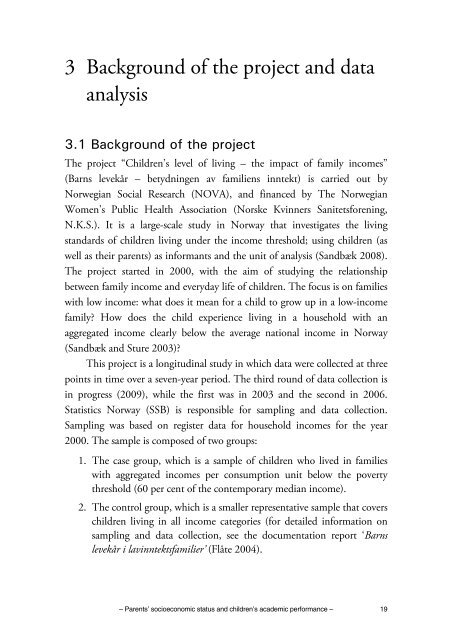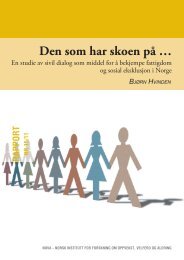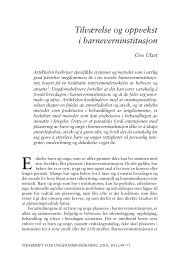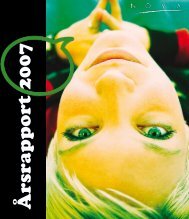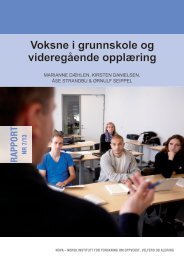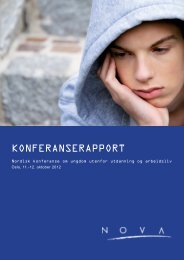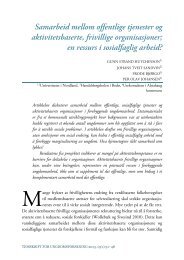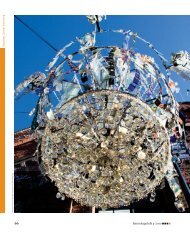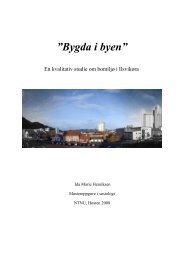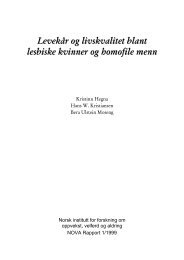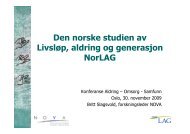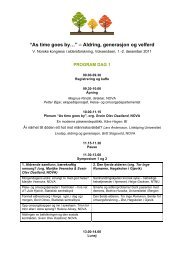Parents' socioeconomic status and children's academic ... - Nova
Parents' socioeconomic status and children's academic ... - Nova
Parents' socioeconomic status and children's academic ... - Nova
You also want an ePaper? Increase the reach of your titles
YUMPU automatically turns print PDFs into web optimized ePapers that Google loves.
3 Background of the project <strong>and</strong> data<br />
analysis<br />
3.1 Background of the project<br />
The project “Children’s level of living – the impact of family incomes”<br />
(Barns levekår – betydningen av familiens inntekt) is carried out by<br />
Norwegian Social Research (NOVA), <strong>and</strong> financed by The Norwegian<br />
Women's Public Health Association (Norske Kvinners Sanitetsforening,<br />
N.K.S.). It is a large-scale study in Norway that investigates the living<br />
st<strong>and</strong>ards of children living under the income threshold; using children (as<br />
well as their parents) as informants <strong>and</strong> the unit of analysis (S<strong>and</strong>bæk 2008).<br />
The project started in 2000, with the aim of studying the relationship<br />
between family income <strong>and</strong> everyday life of children. The focus is on families<br />
with low income: what does it mean for a child to grow up in a low-income<br />
family? How does the child experience living in a household with an<br />
aggregated income clearly below the average national income in Norway<br />
(S<strong>and</strong>bæk <strong>and</strong> Sture 2003)?<br />
This project is a longitudinal study in which data were collected at three<br />
points in time over a seven-year period. The third round of data collection is<br />
in progress (2009), while the first was in 2003 <strong>and</strong> the second in 2006.<br />
Statistics Norway (SSB) is responsible for sampling <strong>and</strong> data collection.<br />
Sampling was based on register data for household incomes for the year<br />
2000. The sample is composed of two groups:<br />
1. The case group, which is a sample of children who lived in families<br />
with aggregated incomes per consumption unit below the poverty<br />
threshold (60 per cent of the contemporary median income).<br />
2. The control group, which is a smaller representative sample that covers<br />
children living in all income categories (for detailed information on<br />
sampling <strong>and</strong> data collection, see the documentation report ‘Barns<br />
levekår i lavinntektsfamilier’ (Flåte 2004).<br />
– Parents’ <strong>socioeconomic</strong> <strong>status</strong> <strong>and</strong> children’s <strong>academic</strong> performance – 19


